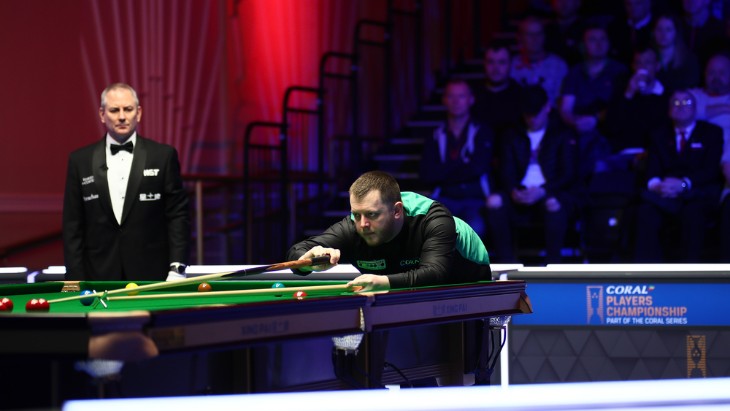In snooker betting, the two primary types of bets are pre-match bets and in-play bets. Pre-match bets, as the name suggests, are placed before a snooker match begins. These bets can encompass a wide range of predictions, such as the overall match winner, the scoreline, or even specific outcomes within a match, like the highest break or the number of frames won by a player. In-play bets, on the other hand, are made while a match is in progress, allowing bettors to react to the unfolding dynamics of the game. These bets often offer more diverse and rapidly changing odds, making them appealing to those who enjoy the excitement of live betting.
Odds and Probabilities
In the realm of sports betting, odds are the numerical representation of the likelihood of a particular outcome occurring. These odds play a pivotal role in determining the potential returns from a successful bet. In the context of snooker betting, understanding how odds work is fundamental.
There are three primary formats for presenting odds: decimal odds, fractional odds, and moneyline odds. Decimal odds express the potential payout for a winning bet as a multiple of the initial stake. For instance, if a snooker player has decimal odds of 2.50 to win a match, a successful £10 bet would yield a total return of £25 (£10 initial stake + £15 profit). Fractional odds are expressed as a fraction, typically in the form of "X/Y." The numerator (X) represents the potential profit, while the denominator (Y) denotes the initial stake. Moneyline odds, commonly used in the United States, indicate how much needs to be wagered to win £100 (or the equivalent in another currency) or how much one can win with a £100 bet.
Decimal Odds
Decimal odds, a common format used in Europe and Australia, offer a straightforward way to understand potential returns from a bet. As previously mentioned, decimal odds represent the total amount that will be returned for every unit staked, including the initial stake. For instance, if a snooker player has decimal odds of 3.00 to win a match, a successful £10 bet would result in a total return of £30 (£10 initial stake + £20 profit).
One of the advantages of decimal odds is their simplicity. Bettors can easily calculate their potential winnings by multiplying their stake by the decimal odds. For example, a £50 bet at odds of 1.50 would yield £75 in total returns (£50 x 1.50). This straightforward calculation makes it easy for individuals to determine the potential profitability of their wagers.
Moreover, decimal odds provide a clear representation of the implied probability of an event occurring. The formula for calculating implied probability from decimal odds is straightforward: divide 1 by the decimal odds. For instance, with decimal odds of 3.00, the implied probability of the associated outcome (e.g., a player winning) is 1/3, which equates to 33.33%. Understanding this relationship between odds and probability is vital for making informed betting decisions.

Fractional Odds
In the world of snooker betting, fractional odds are prevalent in the United Kingdom and Ireland. These odds are typically represented in the form of "X/Y," where X is the potential profit, and Y is the initial stake. For instance, if a snooker player has fractional odds of 5/1 to win a match, a successful £10 bet would result in a profit of £50 (£10 initial stake multiplied by 5).
Fractional odds provide valuable information not only about potential winnings but also about the probability of success. The ratio X/Y represents the potential profit for every unit staked, with Y indicating how much needs to be wagered to win X. In the example of 5/1 odds, this means that for every £1 wagered, a successful bet would yield £5 in profit.
To convert fractional odds into implied probability, a simple formula is employed. The denominator (Y) is added to the numerator (X), and the result is then divided by the denominator. In the case of 5/1 odds, the implied probability is calculated as (5 + 1) / 1, which equals 6. This implies that the associated outcome has a 16.67% chance of occurring. Fractional odds offer a traditional yet comprehensive way to assess betting opportunities in snooker and other sports.
Moneyline Odds
Moneyline odds, commonly used in the United States, present betting odds in a straightforward manner. These odds are often displayed as either positive or negative numbers, with positive numbers indicating the potential profit from a successful £100 (or equivalent) bet and negative numbers showing how much needs to be wagered to win £100.
Positive moneyline odds, such as +150, signify that a bettor stands to profit £150 for every £100 wagered if their bet is successful. On the other hand, negative moneyline odds, like -200, indicate that a bettor must stake £200 to win £100 in profit. The positive and negative signs help bettors quickly assess potential returns and risks associated with each wager.
Understanding moneyline odds and their implications is essential for bettors looking to make informed decisions. Positive moneyline odds reflect an underdog or less likely outcome, offering higher potential returns for those who believe in the underdog's chances. Conversely, negative moneyline odds represent the favorite or more likely outcome, but they require a larger initial stake to achieve a profit. By mastering the interpretation of moneyline odds, bettors can tailor their strategies to their risk tolerance and predictions effectively.
Implied Probability
Implied probability is a critical concept in the world of sports betting, including snooker betting. It is the mathematical representation of the likelihood of an event occurring, as determined by the odds offered by bookmakers. Understanding implied probability is fundamental to making well-informed betting decisions.
To calculate the implied probability from moneyline odds, a straightforward formula can be applied. For positive moneyline odds, the formula is 100 / (moneyline odds + 100), and for negative moneyline odds, it is -moneyline odds / (-moneyline odds + 100). For example, if the odds on a snooker player are +150, the implied probability of them winning the match can be calculated as 100 / (150 + 100), which equals 40%. This implies that the bookmakers believe there is a 40% chance of the player winning.
Implied probability is a valuable tool for bettors as it allows them to compare the bookmakers' odds with their own assessments of the likelihood of an outcome. If a bettor believes that a certain outcome has a higher probability than what is implied by the odds, they may see it as a favorable betting opportunity. Conversely, if the implied probability is lower than their own assessment, they may choose to avoid that bet.
Factors Affecting Snooker Betting Odds
In the world of snooker betting, odds are not static figures but dynamic ones influenced by a multitude of factors. Understanding these factors is crucial for bettors seeking to make informed decisions. Two primary categories of factors significantly impact snooker betting odds: player form and performance, and tournament and venue factors.
Player Form and Performance
The form and performance of snooker players are central determinants of betting odds. Bookmakers meticulously analyze players' recent performance records, considering factors such as win-loss ratios, average frame scores, and tournament history. A player in excellent form, consistently achieving high breaks and winning matches, is likely to be favored by bookmakers, resulting in lower odds for their success. Conversely, a player experiencing a slump or inconsistency may be considered an underdog, offering higher odds to attract bettors.
It's important for snooker bettors to stay updated with players' form and performance statistics, as they can change rapidly, especially in the midst of a tournament. Injuries, fatigue, or changes in mental state can also influence a player's performance and subsequently impact their odds. Keeping a close eye on these factors can provide valuable insights and betting opportunities.
Tournament and Venue Factors
The context of a snooker tournament and the venue in which it is held can significantly affect betting odds. Major tournaments, such as the World Snooker Championship or the Masters, carry more prestige and larger prize pools. Consequently, these tournaments tend to attract a higher caliber of players, resulting in more competitive odds. Smaller, regional tournaments may have less well-known participants and, as a result, offer different odds dynamics.
The venue itself can also play a role in odds determination. Some players may have a strong track record at certain venues due to factors like table conditions, lighting, or crowd support. These factors can lead to shorter odds for players with a history of success at a particular venue.
Betting Strategies
Effective snooker betting is not solely about predicting winners. It involves developing sound strategies that maximize the potential for profit while managing risk. Two key aspects of successful betting strategies are bankroll management and handicapping and analysis.
Bankroll Management
Bankroll management is the foundation of any successful betting strategy. It involves setting aside a specific amount of money dedicated to betting, known as the bankroll, and establishing rules for how much to wager on each bet. A common approach is the "unit" system, where a unit represents a fixed percentage of the bankroll, typically between 1% and 5%.
The purpose of bankroll management is twofold: to protect against significant losses and to allow for consistent, sustainable betting. By betting a fixed percentage of the bankroll on each wager, bettors can mitigate the risk of depleting their funds with a single losing streak. This disciplined approach ensures that even after losses, there are ample resources to continue betting and potentially recover.
Handicapping and Analysis
Handicapping involves assessing the strengths and weaknesses of snooker players and matches to identify opportunities where bookmakers' odds may be misaligned with actual probabilities. This can be a meticulous process that includes studying player statistics, head-to-head records, playing styles, and even situational factors like fatigue and pressure.
Analyzing historical data and trends can provide valuable insights into potential betting opportunities. Bettors can use this information to identify instances where bookmakers may have overlooked certain factors, resulting in odds that don't accurately reflect the true probabilities of an outcome.
Incorporating both bankroll management and handicapping and analysis into your snooker betting strategy can enhance your chances of success. With disciplined bankroll management, you can protect your funds while pursuing potential opportunities identified through thorough analysis.
Live Betting in Snooker
In the realm of sports betting, few experiences can match the excitement and immediacy of live betting, and snooker is no exception. Live betting, also known as in-play betting, allows bettors to place wagers on ongoing matches. It's a dynamic and engaging way to participate in snooker betting, as odds can change rapidly in response to the unfolding action on the table.
Live betting in snooker offers a wide range of betting options, from predicting the winner of the next frame to anticipating the outcome of specific shots, such as whether a player will pot a particular ball. The fluid nature of the game, with frames and situations shifting quickly, presents ample opportunities for bettors to assess the ebb and flow of a match and make strategic wagers.
One of the advantages of live betting is the ability to watch the match live and adjust bets accordingly. Observing how players are performing, their confidence levels, and any tactical adjustments they make can provide valuable insights. However, it's essential to act swiftly, as odds can change in a matter of seconds. Effective live betting requires not only a good understanding of snooker but also the ability to make split-second decisions based on real-time information.

Understanding Betting Markets
In the world of snooker betting, various betting markets cater to a diverse range of preferences and strategies. Understanding these markets is essential for bettors looking to tailor their wagers to their expertise and risk tolerance. Three primary betting markets in snooker are outright betting, match betting, and frame betting.
Outright Betting
Outright betting involves predicting the overall winner of a snooker tournament. This market offers the opportunity for long-term wagers, as bettors can place their bets before a tournament begins and potentially enjoy extended excitement as they track their chosen player's progress. Outright betting often comes with more substantial odds than individual match betting, as the competition is typically fiercer at the tournament level.
Match Betting
Match betting is perhaps the most common form of snooker betting, where bettors predict the winner of a specific match or frame. It allows for immediate engagement and a wide range of betting options. From predicting the match winner to forecasting the total number of frames played, match betting offers a variety of choices to cater to different strategies and preferences.
Frame Betting
Frame betting is a more detailed form of snooker betting, where bettors predict the outcome of individual frames within a match. This market requires a deep understanding of the players' abilities and tactics, as well as the dynamics of the particular match. Frame betting can be particularly rewarding for those who can accurately anticipate the nuances of a snooker match.
Implied Probability in Snooker Betting
Implied probability is a central concept in the world of sports betting, and it plays a crucial role in snooker betting as well. It represents the bookmakers' assessment of the likelihood of a particular outcome occurring, as indicated by the odds they offer. Understanding implied probability is essential for bettors as it allows them to compare bookmakers' assessments with their own predictions.
To calculate implied probability from betting odds, whether they are decimal, fractional, or moneyline odds, bettors can employ straightforward formulas. For decimal odds, it's a matter of dividing 1 by the decimal odds. For example, if a snooker player has decimal odds of 2.00 to win a match, the implied probability is 1/2.00, which equals 50%. This implies that the bookmakers believe there is a 50% chance of the player winning.
For fractional odds, the calculation involves dividing the denominator by the sum of the numerator and denominator. If a player has fractional odds of 5/2 to win a match, the implied probability is 2 / (5 + 2), which equals 28.57%. Moneyline odds are also used to calculate implied probability, and the formula varies depending on whether the odds are positive or negative.
Understanding implied probability is valuable because it allows bettors to identify discrepancies between bookmakers' assessments and their own predictions. If a bettor believes that an outcome has a higher probability of occurring than what the bookmakers' odds imply, they may see it as a favorable betting opportunity. Conversely, if the implied probability is lower than their own assessment, they may choose to avoid that bet.
Conclusion
As you embark on your snooker betting journey, remember to apply the principles and strategies outlined in this article. Continuously assess odds, stay informed about player form and tournament dynamics, and exercise disciplined bankroll management. By doing so, you can elevate your snooker betting experience and potentially enjoy the rewards that come with making well-informed wagers in this captivating world of cue sports betting.
Our journey culminated in a deep understanding of implied probability, a crucial tool for comparing bookmakers' assessments with your own predictions. Armed with this knowledge, you can make more informed decisions and seek out favorable betting opportunities.
For more information:




.webp)


 (1).webp)




















